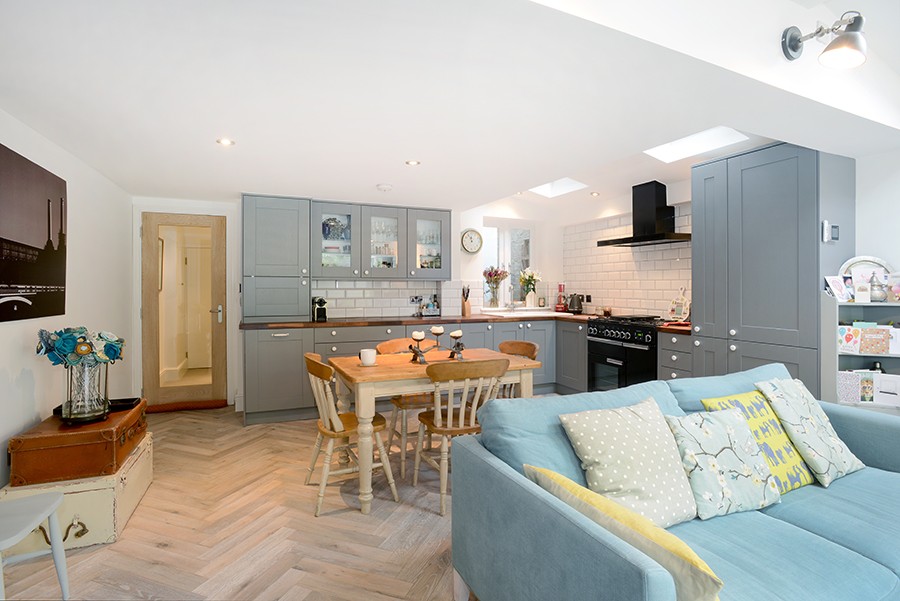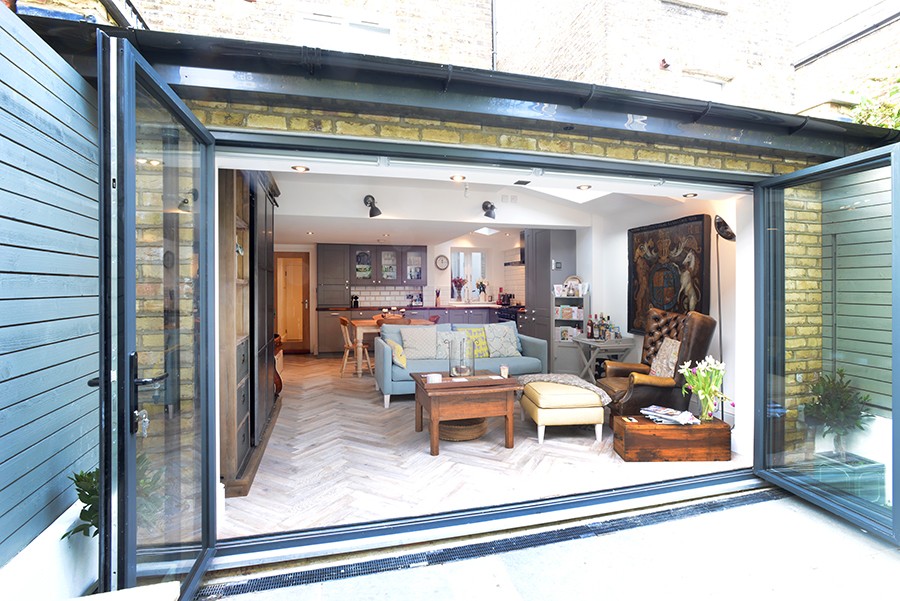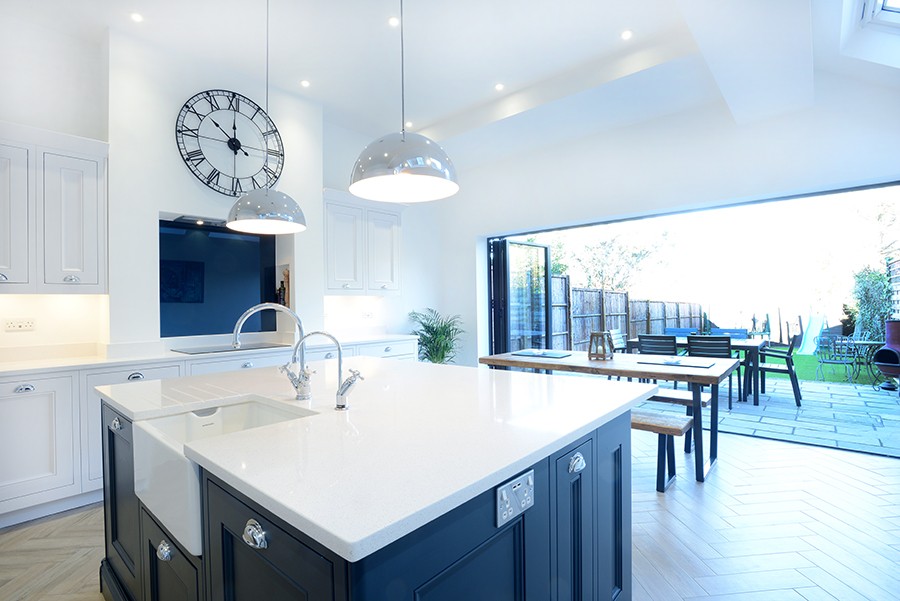A home extension is an investment in both your living space and your lifestyle, and understanding the financial aspects is essential for a successful and stress-free experience. From envisioning your dream extension to bringing it to life, every step of the process requires careful financial planning and management. From architectural design fees to construction costs and unexpected contingencies, designing and building a home extension involves various financial elements.
So, whether you’re an experienced homeowner seeking to extend your living space or a first-time renovation enthusiast, this article provides you with the knowledge and confidence to embark on your project with financial clarity. In this article, we’ll unravel the complexities of estimating these expenses and help you understand the key components contributing to the overall budget.

Estimating Costs: Breaking Down the Budget
Understanding the financial components contributing to a home extension is crucial for creating an accurate budget that reflects your vision and financial resources. A comprehensive budget encompasses various elements that collectively contribute to the overall cost of your project. These components include:
Architectural Design Fees: Enlisting the expertise of architects and designers is essential for translating your ideas into detailed plans. Architectural fees encompass initial consultations, design development, and the creation of detailed drawings that align with your vision. It’s essential to communicate your budget with architects and designers from the outset so they can tailor their services accordingly.
Construction Costs: Construction costs cover the building process, including labour, materials, and equipment. Gathering quotes from reputable contractors will give you a clearer picture of what to expect regarding these costs. Factors such as the size and complexity of your extension and the quality of materials you choose will influence this category.
Permits and Planning Fees: Obtaining planning and permits from local authorities is necessary to ensure your extension complies with building codes and regulations. These often come with associated fees that must be factored into your budget.
Contingencies: It’s wise to allocate a portion of your budget to address unexpected challenges during construction. Unforeseen contingencies could include structural issues, unexpected design changes, or unforeseen delays. To address unforeseen contingencies, many experts recommend setting aside around 10-20% of your total budget as a cushion.
By understanding these components, you’re better equipped to create a comprehensive budget that considers all aspects of your home extension.

Creating a Realistic Budget
Creating a budget for your home extension project is a critical step that requires a delicate balance between your vision and available resources. While you aspire to bring your dream space to life, it’s essential to establish financial parameters that guide your project’s scope and feasibility.
Begin by assessing your financial situation and determining how much you can invest in your extension. Consider your savings, available credit, and any additional financing options you might explore. Setting clear financial boundaries helps prevent overspending and ensures your project remains within your means.
Your design aspirations play a pivotal role in shaping your budget. As you envision your ideal extension, remember that various design choices can significantly impact costs. Luxury finishes, complex architectural features, and high-end materials can contribute to a higher budget. Conversely, a more modest design with thoughtful space optimisation can help you achieve your goals without exceeding your budget.
Even the most meticulously planned projects can encounter unexpected challenges that lead to cost overruns. To mitigate this risk, allocating a portion of your budget as a contingency fund is prudent. This fund acts as a safety net, allowing you to address unforeseen circumstances or design changes without derailing your project. While aiming for cost predictability is essential, having a cushion provides financial peace of mind.
Architects and contractors can help you understand where your money is best invested for maximum impact. Moreover, they can guide you in prioritising features that align with your vision while adhering to your budget constraints. Remember that creating a realistic budget isn’t just about limitations; it’s also about making thoughtful choices that enhance the value and enjoyment of your home.

Leveraging Home Equity
When considering financing options for your home extension project, tapping into the equity of your property can be an attractive and practical choice. Home equity is the difference between your home’s current market value and the outstanding balance on your mortgage. It represents an asset you can leverage for various purposes, including financing your home extension. Using your home equity, you’re borrowing against the value accumulated in your property over time.
Leveraging home equity offers distinct benefits, such as lower interest rates than other borrowing forms. However, managing the risks associated with using your property as collateral is essential. Therefore, borrowing responsibly is crucial, ensuring you can comfortably manage the repayment terms.
Before deciding to leverage home equity, assess your financial situation and consider how the borrowed funds will be used. Creating a detailed budget for your extension will help you determine the appropriate amount to borrow. Consulting with financial professionals will provide insights into the benefits, risks, and long-term implications of using your property’s equity to finance your project.
By understanding the process, evaluating your needs, and making informed decisions, you can leverage your property’s value to create a beautiful and functional extension while maintaining financial stability.

Mitigating Challenges
Embarking on a home extension is an exciting journey, but preparing for unexpected challenges that may arise along the way is essential. Managing potential risks and uncertainties requires a proactive approach to ensure your project stays on track and your financial well-being remains intact.
Home extension projects can encounter unexpected expenses due to various factors, such as unforeseen structural issues, design changes, or supply chain disruptions. To mitigate these risks, carefully plan your project with the help of professionals who can identify potential challenges and suggest solutions in advance.
Allow flexibility in your project schedule and budget to accommodate unforeseen changes without causing significant disruptions. Schedule regular inspections throughout the project to catch any issues early on and address them promptly.
Creating a contingency fund is a proactive step to handle unexpected expenses. Allocate a portion of your budget to this fund to act as a buffer against unforeseen challenges. Having this cushion can provide peace of mind, knowing that you’re prepared for the unexpected without jeopardising the financial viability of your project.
Open lines of communication are essential throughout your project. Regularly engage with your contractors to stay informed about progress, challenges, and potential cost adjustments. Discuss options with your contractors if unexpected expenses arise and evaluate the best course of action. Similarly, maintain open communication with your financial institution to ensure they know of any changes that may impact your financing arrangement.
Remember, a well-prepared approach to risk management ensures the success of your home extension and enhances your overall project experience. Architects, contractors, and financial advisors can offer insights into potential challenges, help you assess the need for contingency funds, and advise on managing unexpected expenses.

































